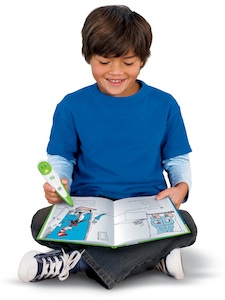Has Your Child Stopped Napping At Daycare?

My son is almost 4 and attends daycare full-time during the school year. Every day after lunch they have rest time for a few hours. However, we recently ran into some trouble because Gavin had stopped napping during rest time.
Let’s just say Gavin doesn’t have the “lie there and look at the ceiling” type activity level. He’s active, he’s curious, he can have a hard time settling himself down and this was leading to some troubling and testing behaviors, while the kids around him were sleeping. Not only that, if he did fall asleep, it was at the end of rest time. At home, he would then be up until almost 10 p.m. with a screaming match while we were trying to put him to bed at the same time each night, but his body just wasn’t ready. What we did know, is that on the weekends he didn’t nap, he would go to bed without much trouble by 8 p.m. and sleep until 6:30 or 7 a.m.
Offering a rest time is generally required by law. Teachers also rely on the rest time at daycare typically to prep projects for later in the day or the week, while they eat their lunch, which is time that they seriously do deserve. So I understand why it’s important to encourage kids to rest and sleep, but I just couldn’t believe that I had the only child in the universe who was refusing to nap.
Once I started asking around, Gavin hasn’t been the only preschool aged child I’ve heard of recently who has stopped napping at daycare or at home. It’s fairly common I’m hearing from friends and co-workers that children have stopped napping, might be acting out, and are similarly having trouble getting to bed consistently. At the preschool I work at, this year we even received referrals for special education services for children who are only really having difficulty settling down to follow a nap routine, thinking they might have some self-regulation disorders, like sensory processing disorder.
According to what I can find googling around on the internet at WebMd, BabyCenter and the National Sleep Foundation, most 3-6 year olds only require about 10-13 hours per day. Some 3-year-olds nap between 1-3 hours, most 5-year-olds do not nap.
We were able to work with Gavin’s teachers that IF he fell asleep right way, they would wake him up after 45 minutes because obviously he probably needed a nap that day. We also asked them to leave us a note in his lunchbox on the days he fell asleep, so we could gauge his bedtime at home. No note, meant he didn’t have a nap.
In addition I packed up a pair of headphones, his LeapFrog TAG Reader, and a few TAG books. The TAG Reader is a unique pen where book content is downloaded onto the stylus. When the child touches the stylus to the page, it can read the story, as well as play various sound effects and games that focus on teaching vocabulary and reading comprehension.
During the time the other kids are still sleeping his teachers are allowing him use his TAG Reader and his books by himself, as long as he stays on his mat. Every now and then I hit a sale at Target or Toys “R” Us and buy some new books to peak his interest, but there are so many activities in each book, he has done well with a choice of about 4 books.
Gavin’s teachers also put together a small box of quiet activities that he could play with at the table. Some parents of children I’ve evaluated have brought in Nintendo DS systems, LeapPads, and other technology devices but in my opinion, the TAG Reader provides more sound effects and interactions that keep him engaged and interested, while he can still use his imagination and expand his love of reading and books.
Has your child stopped napping at home? What were your solutions?
LeapFrog provided a TAG Reader free to facilitate a review, any additional opinions are my own.
Related articles:
TAG Reading System Review on About.com Toys
TAG Jr. Review on About.com Toys
Speakaboos: A Great App to Promote Literacy
What is Sensory Processing Disorder? written for PlayOnWords.com